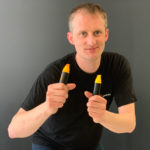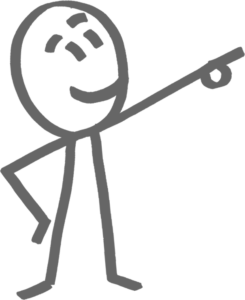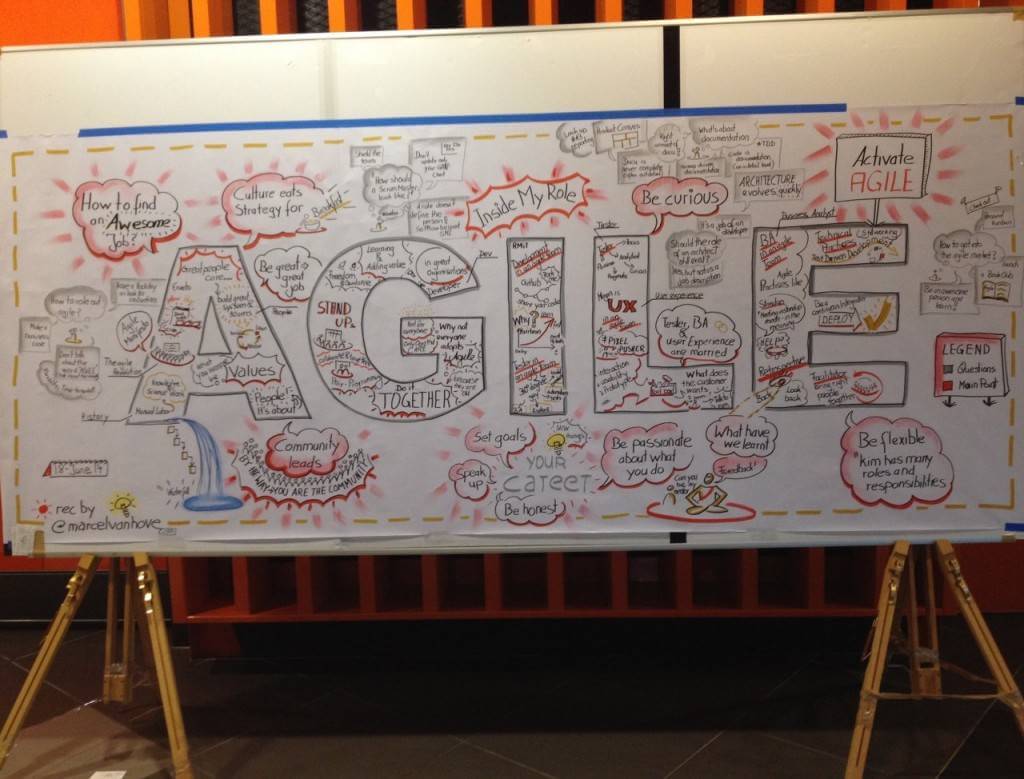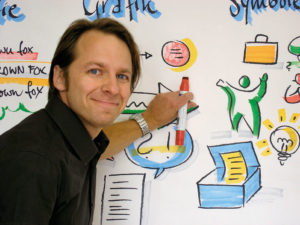







Today I have the honour to bring to you Natalie Nelson. Natalie is the principal at Ashburton primary school. Her school never received much money since the 1920’s and were therefore entitled for a redevelopment. Natalie’s school received a big cheque which enabled her to bring the school to the next level of education.
Natalie tells her story of how she started on a journey to transform the school to a place of future education. Her approach is quite different to many others. She calls it design from the inside out. I give you an example what that means: After coming up with key principles what school should be about, they asked the children to create their new future school. You will learn why Ashburton primary has floor to ceiling windows or different learning areas for different students.
We talk about what it means to grow up in our complex world of today. What skills the kids need to learn which (by the way) are far beyond reading, writing and maths. Kids today need to learn how to keep their energy level in balance, how they can relax their mind and how to deal with complex problems in general. Those skills become much more valuable in the future. Today’s schools focus on deep thinking techniques because it is necessary for real creative work. You can outsource the process of writing but you can’t outsource the creativity. Through that we talk about the three levels of thinking and how to get down to the core thinking where the creative magic happens.
I think we all can do something about the future of our kid’s in the way they learn and even further in the way we all work together in our modern world. The insights from Ashburton primary school are not limited to school education at all, they are applicable to the way we work together in our offices as well.
So while you listen to this podcast think about who else would be inspired by the story and pass the ball on so that more people get in contact with the future of education. I hope you enjoy this episode with Natalie Nelson, principle at Ashburton primary school.
Finally, if the interview inspired you to improve your own creativity and visual thinking skills then you are welcome to come around to one of the bikablo® trainings. If you are in Europe jump over on bikablo.com and when you are in Australia or New Zealand have a look in the training section of my website and check out the training program there. Next one is coming up in Sydney, Melbourne and Perth and depending on when you book there might still be an early bird available. So jump over onto the website and book your next career step as a visual leader. Thanks again for listening – See you next time.

Marcel combines agile team coaching with visual thinking. Marcel believes that a group of people drawing together on a whiteboard can change the world. He loves high-performing teams and therefore coaches teams every day.



Design Thinking Trainer at LUMA Institute
Today I have the honour to have Patrick Sharbaugh with me. Patrick works for the LUMA institute, a training provider that enables companies and individuals to be more creative. He teaches design thinking and in this interview he gives us an introduction into the world of design thinking. We talk about creative problem solving, visual languages and what it means to have the customer in the centre of your solution design.
But first of all, let me introduce to you, Patrick. Patrick grew up in Charleston, South Carolina. He worked in Japan for a while and moved on to Vietnam where he worked in Saigon. In Saigon, he got in contact with the RMIT University and through that found his way to Australia. He works today in America as well as Australia as a trainer for Design Thinking, runs a Meet-up in the Melbourne CBD and is a great guy to meet every day.
We give you a step-by-step introduction into design thinking while we help Henry Ford to build a better car and explore why the Apple iPod 1 was important but not great.
I hope you enjoy this conversation with Patrick Sharbaugh from the LUMA Institute!

Marcel combines agile team coaching with visual thinking. Marcel believes that a group of people drawing together on a whiteboard can change the world. He loves high-performing teams and therefore coaches teams every day.

In this episode I talk about the first day back at work where you need to find a way to apply the new skills in your day to day job. We talk about positive psychology and how you can motivate yourself to progress your visual journey every day in the office. Additional we introduce the visual facilitation garage. An advanced visual facilitation workshop where you can meet people who are on the same journey as you. This workshop will be help every month in Sydney and Melbourne and is hosted in Germany as well for many years. I hope you enjoy this short episode!
Hey! Guys, this is Marcel again from the Bikablo Radio with another insight episode.
Today I want to talk about the third day of the Bikablo training. If you have a look at the Bikablo training program in Australia you might say “There is no third day in the training”, and that’s right.
There is a two days training when you come to the Bikablo fundamentals and practitioner level, but what I mean is the third day, which is the first day when you’re back at work.
At work, the real change happens. You need to find ways to practice and apply the things you learnt on a daily basis. Here you might go through very mixed feelings.
First of all, you get a lot of positive feedback because people come to you and say Oh! My god, when have you learned to draw. I didn’t know that you could do that. That will actually happen, l promise you that, but as with everything new you also will not get it right the first time and you need to be OK with it.
What I mean is that you will not do the same performance you did in the training class. In the training room you had a safe environment and could explore the tools and techniques in your own speed. At work the speed of the others matter and outcomes become more important then the beauty of your lines. Very simple things that you had mastered in the training class are difficult again like drawing the light bulb or simple shapes like boxes and arrows.
Recently, I came across the work from Barbara Fredrickson, she is a scientist with more than twenty years experience in positive psychology. She wrote several books including Love 2.0 and Positivity.
On of her concepts which hit me and I really like is the “tipping point”. It is the ratio between positive and negative emotions and how to balance those feelings in a positive way: According to Barbara’s works, you need about three positive emotions to equalize one negative emotion.
That means for every line you draw not straight or every light bulb pictogram that looks a bit out of shape and funny, you need to celebrate three things that you did right and that you are happy about. The problem is when you tip over to the negative side you are more likely to stop the change you started in the training and through that you would have wasted time and training budget.
So how can you make sure that you get a healthy ratio between your positive emotions so that it equalizes the negative emotions out which will appear most definitely.
First, you celebrate everything that you got right and through that motivate yourself. That could mean that you are proud about your neat writing or the bikablo® containers and frames you swapped your content in. Or the strategic use of colours and the way you applied the shadows and highlights – every little success counts towards the positive emotions ratio. Please open your eyes and celebrate those little successes at work every day.
Secondly, I would like to introduce to you another great concept of Barbara Fredrickson work where she describes “micro moments of connections” between people. Those are the beautiful moments when two people see each other. It’s when you understand each others needs and feel connected with someone.
Of course you need a person you trust and can be open to. It’s a person that has a smile always ready for you at work. In our corporate world we need those good mates so that we can support each other every day. When starting visual facilitation you reactivate your drawing skill that you had almost forgotten since childhood and you need good mates that give you constructive feedback to progress further.
However, even if you have great people at work it is very hard for them to offer feedback to you as you probably do something new they have no own experience in. Therefore they struggle to support you even if they would like it.
Here the bikablo® Akademie will not let you down, we present to you the new bikablo® Visual Facilitation Garage. An advanced half-day bikablo® workshop in Sydney and Melbourne that brings together bikablo® graduates to practice, learn and grow together as visual leaders. If you are in German speaking Europe – The visual facilitation garage is also hosted in Germany.
You will get feedback about your work and see what you have already mastered and where you need to improve next. You will learn from someone who is on the same journey as you or just a couple of steps ahead!
I hope that the bikablo® Visual Facilitation Garage can provide you not only with necessary feedback but also creates those awesome “micro-moments of connection” that everyone need to reenergize their batteries so that you stay on track and become a visual ninja at work.
I hope to see you soon in Melbourne or Sydney in the Visual Facilitation Garage. Thank you very much and have a great week.

Marcel combines agile team coaching with visual thinking. Marcel believes that a group of people drawing together on a whiteboard can change the world. He loves high-performing teams and therefore coaches teams every day.


What is Visual Facilitation about?
This hot air balloon acts as a symbol for sharing the same context. As the facilitator, I have one key assumption which is, that best collaboration can happen if we create real exchange between people. What I mean is basically showing more of ourselves to each other. If we do that we exchange much more than just content – we create a real emotional relationship! Drawing together is a great way to achieve that emotional connection.
I think the real exchange is actually the only way how organisations can do change and create an engaging culture that helps them to thrive.
Coming back to the group being in the same meeting: What this group wants to achieve is to come to the desired outcome or do a change together.
The progress during the meeting is not linear, often the meeting has many ups and downs and hopefully ends successfully. This is where the role of the facilitator comes into play. So let’s have a look at the facilitator first.
As a facilitator, I’m a guide that leads the group through these ups and downs. The facilitator is not part of the group, he is not working in the content, he is more the creator of the working environment so that the group can have this real exchange and collaborate well. So what is now a visual facilitator doing?
I think the real exchange is actually the only way how organisations can do change and create an engaging culture that helps them to thrive.
Coming back to the group being in the same meeting: What this group wants to achieve is to come to the desired outcome or do a change together.
The progress during the meeting is not linear, often the meeting has many ups and downs and hopefully ends successfully. This is where the role of the facilitator comes into play. So let’s have a look at the facilitator first.
As a visual facilitator, as the word says, we make things visible. We listen to statements, quotes and ideas, but we also look for hidden things, like emotional positive reactions or conflicts. We are able to raise awareness around that in a neutral way.
A good friend of mine, Martin Haussmann, says: A visual facilitator is like being the marker – being the pen for the group.
So we bring onto this canvas what the people say and through drawing it we reflect it back to the group. We are acting as a mirror for the group process and help them through that change.
We are quite often not completely aware what the detailed discussion is about and that is not needed because we’re working a bit underneath the content layer. In this way, it doesn’t replace meeting minutes. We create a richer picture but not a detailed summary.
Let’s say we capture a 2-day conference, then it could be that the screen is 10 meters wide. At the beginning of the first day it is almost empty, it might have a headline or a topic on it. However, through the progress of the days, we capture what happened and by the end of the conference, we have created a timeline of insights.

Graphic Recording at Agile Australia

A facilitator is in charge of the dialogue, the exchange in the group. He creates space for collaboration. That’s true for the visual facilitator as well but he also captures the insights on a big screen and reflects them back to the group to inspire them to work further. Through that, we create a visual summary of what has happened. We actually make the dialogue visible.
If you liked what I just explained, or if you need a visual facilitator just shoot me an email or call me. If you want to learn it yourself come to my next visual facilitation training class. And follow me on twitter

Marcel combines agile team coaching with visual thinking. Marcel believes that a group of people drawing together on a whiteboard can change the world. He loves high-performing teams and therefore coaches teams every day.



Director of the bikablo® company for visual storytelling, graphic recording, visual facilitation and visual consulting
This episode looks beyond the horizon: We start with a comprehensive introduction into the world of visualisation and go down the rabbit hole into group facilitation and conflict solving through drawing together. When we come out again, we go 12 years back in history and talk about the early days of visualisation when bikablo® wasn’t known at all. How the systematic bikablo® technique appeared and what the three pillars of bikablo® are about. We then look into the future and explore areas that bikablo® could explore in the future.
We look into different cultures and how other cultures use visuals in different ways. Over the last 12 years we have just started to learn about visual thinking and there is much more to explore.

Marcel combines agile team coaching with visual thinking. Marcel believes that a group of people drawing together on a whiteboard can change the world. He loves high-performing teams and therefore coaches teams every day.

Last year we ran a 2-day class in the bikablo® visual facilitation training in Melbourne. While I created the photo documentation for participants, I thought why not exporting a slideshow for everyone to share.
To give a bit of context: On the first day of the training you reactivate your drawing skills and on the second day we put the learnings into practice with group facilitation exercises, visual storytelling and graphic recording.
The original slideshow export was much too long so I cut out the Graphic Recording exercise from the second day. I think you get an idea about the training. Enjoy the 60 seconds footage!

Get an idea about the training

Marcel combines agile team coaching with visual thinking. Marcel believes that a group of people drawing together on a whiteboard can change the world. He loves high-performing teams and therefore coaches teams every day.

About 5 years ago something incredibly inspiring changed my life! I was an agile trainer and used mostly PowerPoint at that time when I attended my first Bikablo® visual facilitation training. I never had a learning experience where I could see such quick progress. In only one day I learnt the basics of how to present ideas on a flip chart and how to explain my ideas with my own drawings.

The training in 77 seconds
I went back to symbolic drawings, like every child would naturally do. Now, 5 years and a lot of practice later, I offer the same training in Australia. See my 77-second video to get an impression of a great day with 14 attendants in Melbourne.
We started with how to hold a pen and drawing basic shapes and lines. Then we went on to draw containers, shadows and colours and practised loads of figures and symbols. Everyone had a great day! Please enjoy the video!

Marcel combines agile team coaching with visual thinking. Marcel believes that a group of people drawing together on a whiteboard can change the world. He loves high-performing teams and therefore coaches teams every day.

